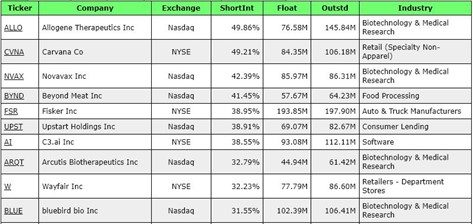When your grandfather got on the horn with his stockbroker to buy colossal 100-share blocks of IBM, he went through that trouble because he believed IBM had strong fundamentals and great future earnings potential. In those days, earnings made the world go 'round.
Of course, it's a different world today - and not just because you can buy fractional shares of zombie stocks on your smartwatch.
It's different because earnings don't really run the show anymore. That's a shocking statement, but it happens to be true: 93% of the returns on the S&P 500 right now are driven by the broader global liquidity picture.
So, it's time to say it out loud: Cash is king.
In this new market reality, traditional models are becoming increasingly obsolete. Years upon years of unprecedented fiscal expansion in the world's big economies have killed those models.
Now, I'm on the record as to how I feel about that expansion, but personal feelings aside, as investors, we have to come to grips with this trend. That tsunami of cash is fueling incredible momentum right now, and we have to play along, whether we're holding our noses or not.
Look at what's happened since momentum turned green on June 1st…
The "Experts" Haven't Caught Up Yet
This shift triggered a squeeze in asset prices that defied conventional wisdom. Don't believe me? Go ahead and pull up the chart on your favorite overpriced zombie stock and tell me how it looks…
Look at a company like Carvana (CVNA). This company was trading at around $3 a few months ago, and now it's come more than 860% to trade at $44. It's propelled by expanding fiscal conditions and positive momentum.

That said, not everyone agrees with me. I've had conversations with economists I regard as very intelligent and highly skilled. Some of them are adamant the market's behavior isn't due to a liquidity flood. But to that, I say: Who cares? We've been living and investing under these conditions for most of the past 13 years, and it's evident to me liquidity plays an outsized role.
For me, the proof is in that June 1st momentum shift. The Federal Reserve was again able to access "repos" - reverse repurchase agreements (RRP) - following the resolution of the debt ceiling crisis. This move effectively released more liquidity into the system, and momentum surged. Then the People's Bank of China injected an additional CN¥1 trillion ($139.8 billion) of liquidity into China's system, adding fuel to the momentum we've been witnessing.
Some may argue about how liquidity is measured, but in the grand scheme of things, it doesn't matter. The charts, the relationships, and the expansion of central bank balance sheets all demonstrate the influence of liquidity on the stock market.

We’ve seen this play out recently in the energy sector. The recent move in energy isn't solely due to OPEC cuts or around the cost-effectiveness of producing oil in the Permian as highlighted in our thesis; rather, it's largely influenced by the abundance of money in the market.

Admitting this reality can be challenging for many people who want (or need) to defend what they learned in their MBA or Ph.D. studies. But as investors, we have to acknowledge the traditional models are changing, dying even. We need to look beyond them if we want to meet our primary goal of beating inflation and the central banks, let alone the S&P 500 benchmark.
At the end of the day, if the relationship between the market and momentum is linked to liquidity, then the markets are behaving rationally.
Want proof? Just consider some of the names from highshortinterest.com when momentum went green on June 1st. We already looked at Carvana; it’s certainly not alone.

Upstart (UPST) went from $26 to $65

Wayfair (W) jumped from $39 to $72

And we can’t forget my least favorite company on Earth, Beyond Meat (BYND) which surged to $19 from $10.

That’s all the proof I need that this market revolves around liquidity and fiscal expansion. If we wait around for some ivory tower-types to “officially” acknowledge this paradigm shift, we’re as good as broke.
In this environment, winners will be the ones able to ride momentum best and those who can identify likely short-squeeze candidates; there’s no real need to trade expensive options, although that’s certainly a possibility for folks comfortable with doing so. The best downside protection right now are simple tight, well-tended stops.
Cash is king now; it’s the new reality of the market. Follow the money as quickly and smartly as you can.
Cheers,
Garrett
About the Author
Garrett Baldwin is a globally recognized research economist, financial writer, consultant, and political risk analyst with decades of trading experience and degrees in economics, cybersecurity, and business from Johns Hopkins, Purdue, Indiana University, and Northwestern.



